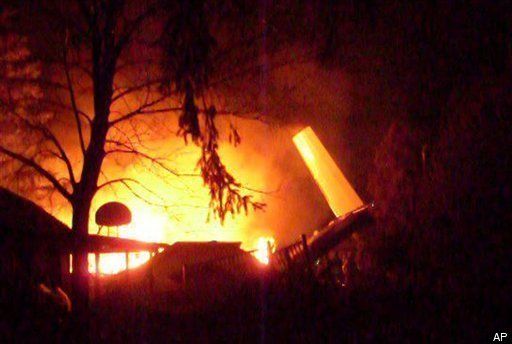
The Airline Pilots Association is furious about the probable cause issued by the National Transportation Safety Board in the crash of Continental Express flight 3407, (Colgan Air) and not just because the labor union exists to look out for the best interests of its members. No, ALPA is outraged because in determining what happened to Continental Express flight 3407, the NTSB focused on a symptom and ignored the cause.
Following a hearing on February 2, the board determined that the pilots of the flight, Capt. Marvin Renslow and First Officer Rebecca Shaw, mishandled a stall, and despite the fact that there was time to recover, failed to do so, causing the crash.
The NTSB's hearing was lengthy and detailed including discussion of crew training, fatigue, company policies and hiring practices. But at the end of the day, according to the board's finding of probable cause, responsibility for the accident falls to Renslow and Shaw.
In a statement later, ALPA president John Prater pointed out what should be obvious to the board because its a basic truth in accident investigations; there is no one cause.
"The Board has missed a valuable opportunity to highlight the many factors that combined to cause this tragedy," Mr. Prater said.
The full NTSB probable cause statement follows below, but in summary, the board cites four actions, lapses actually: 1) the crew's failure to monitor airspeed, 2) its failure to observe discipline in the cockpit, 3) the captain's failure to monitor the flight and 4) the airline's operating procedures for flights in icing conditions.
It's a list that heaves buckets of blame on the pilot. Okay, he was not qualified by many measures - the most dramatic being a record of failed check rides and an inability to focus on the task at hand as seen from a cockpit voice recorder transcript that demonstrate this guy's mind was everywhere but on the flight.
The larger question, one that begs examination, is how was he in the cockpit in the first place? How does a succession of first officers work with a pilot whose flying skills and lack of professionalism are so apparent without passing along their concerns? How does his employer fail to note these shortcomings?
John Gadzinski, an airline pilot and fellow member of the International Society of Air Safety Investigators told me once - and I'm going to paraphrase here because truth be told, we were drinking at the time - that an airline's commitment to safety can be easily determined by answering this simple question. Is there a gap between its policies and its practices?
Colgan repeatedly states that safety is a top concern and yet, here's the gap. Colgan claimed to have a policy prohibiting pilots from overnighting in crew lounges, yet it was a well known fact that commuting pilots did just that. Colgan claimed use of personal electronic devices was prohibited, and yet, the 24-year-old first officer on the flight not only felt free to send text messages, but when she did so, the captain failed to say anything to her about it.
Sterile cockpit? We'll that's not just a Colgan "policy"; its an F.A.A. requirement. On the night of the crash, Flight 3407 had an hour-long taxi out at Newark Liberty Airport while waiting takeoff. Virtually the entire time was spent in conversation, but only sixteen minutes of talk was about the flight.
Its just not believable that this kind of cockpit behavior was unknown to Colgan. Getting to the heart of why that was the case is entirely relevant to determining why this plane crashed. Its bigger than Mr. Renslow and Ms. Shaw. Its bigger than Colgan too. There's a crisis here, but you'd never know it by reading the probable cause statement.
Sure, it's recognized by the safety board -- to the extent that it plans two public events, one to study pilot training and standards and another to look into "code-share" operations.
Whether the effect of future discussions will be as effective as something more comprehensive emerging within the powerful, emotional atmosphere of a crash hearing remains to be seen.
In discussing the danger of Mr. Renslow's loquaciousness, NTSB member Robert Sumwalt said he squandered time he did not have. Waiting too long to address the problems in the regional airline business risks the same fate.
The National Transportation Safety Board determines that the probable cause of this accident was the captain's inappropriate response to the activation of the stick shaker, which led to an aerodynamic stall from which the airplane did not recover. Contributing to the accident were (1) the flight crew's failure to monitor airspeed in relation to the rising position of the low-speed cue, (2) the flight crew's failure to adhere to sterile cockpit procedures, (3) the captain's failure to effectively manage the flight, and (4) Colgan Air's inadequate procedures for airspeed selection and management during approaches in icing conditions.
